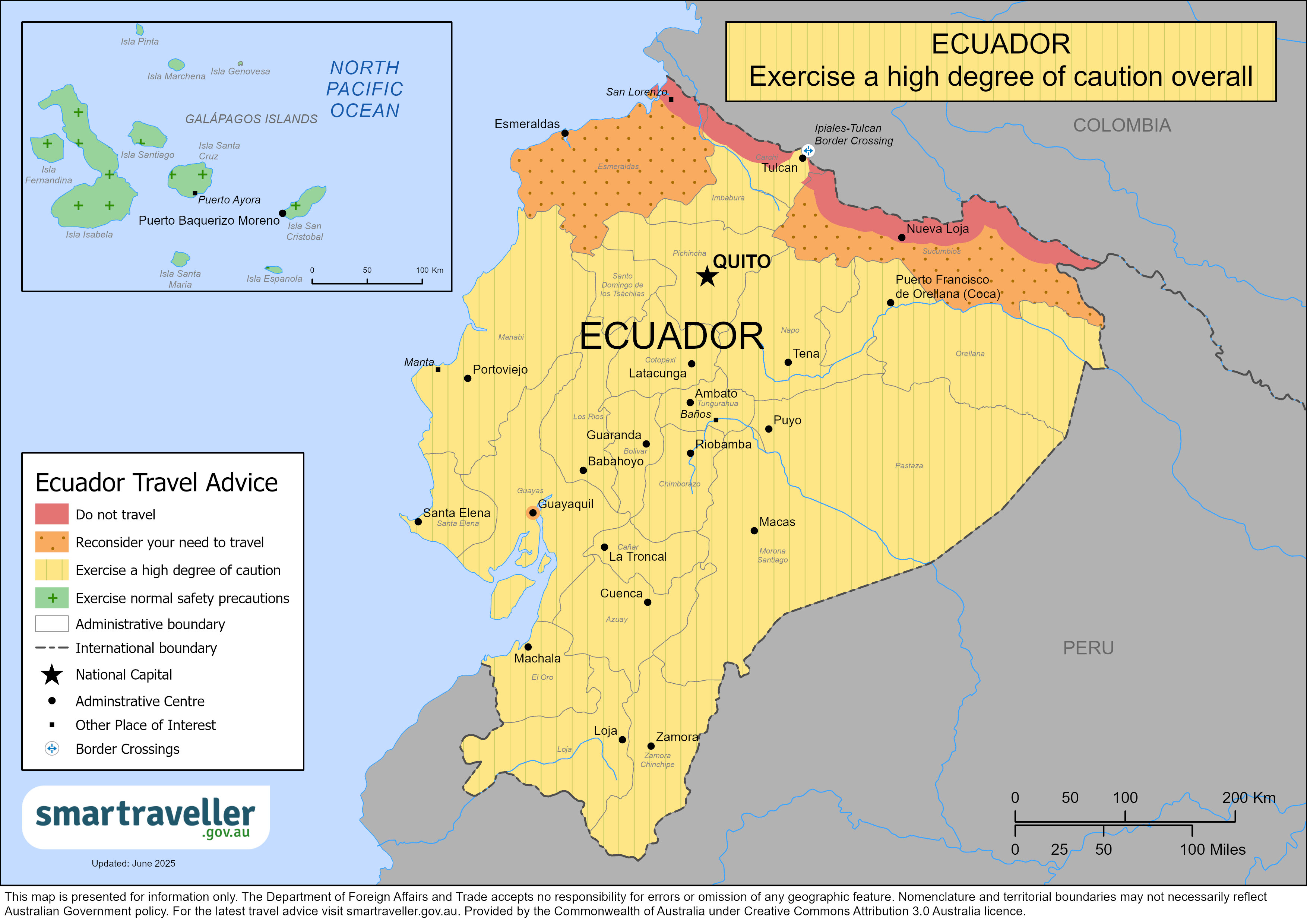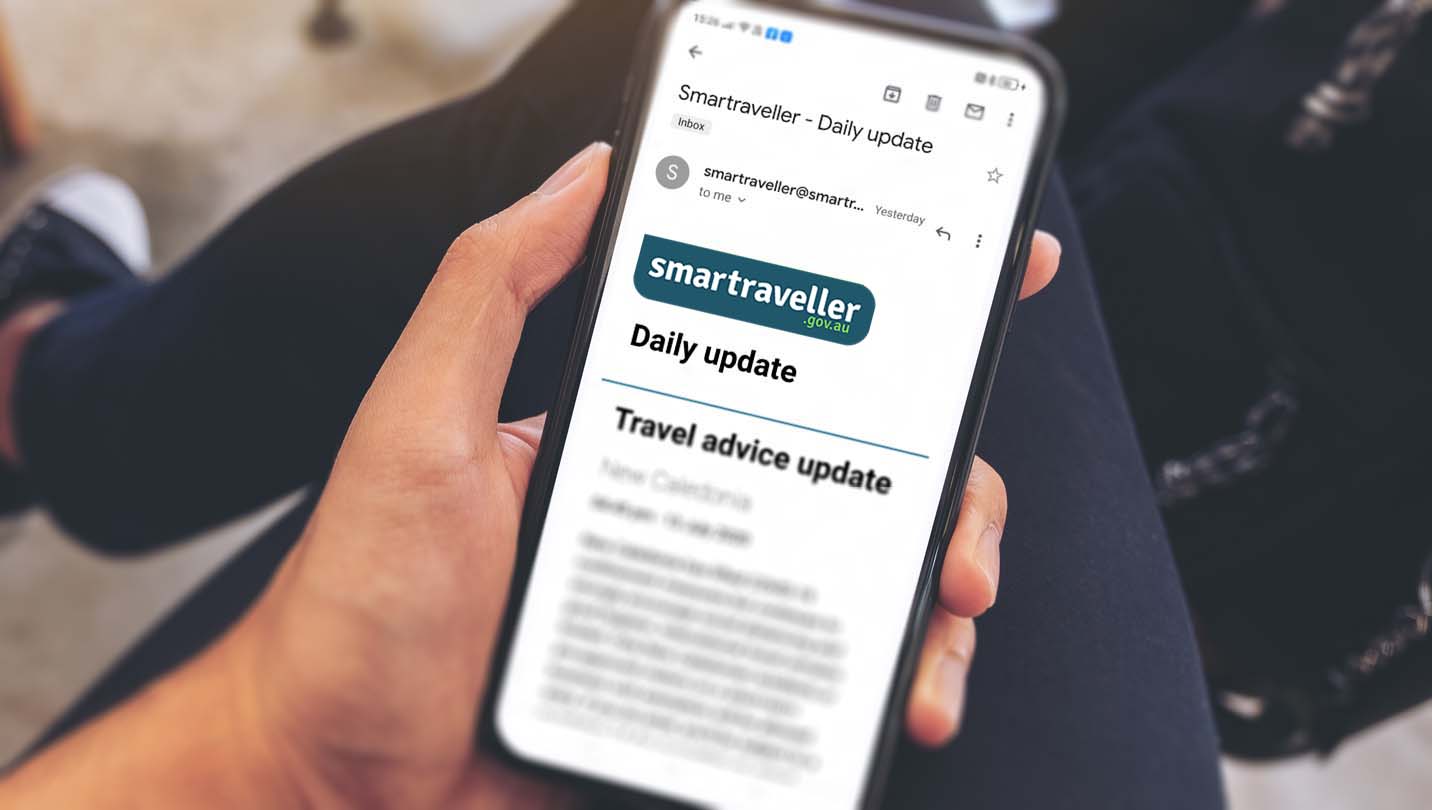In January 2024, Ecuador declared a nationwide state of 'internal armed conflict' in response to the rise in crime and gang violence across the country. This state enables an increased military and police presence.
The security situation may change at short notice. Check for updates from Ecuadorian authorities.
Organised criminal groups have employed tactics such as targeted killings, express kidnappings, armed robberies, extortion and bomb attacks in public places. On 14 October, a car bomb exploded near the Sheraton Hotel and Mall del Sol shopping centre in Guayaquil. Additional explosions were reported on 15 October on major roads in the Guayas and El Oro provinces. Always remain aware of your surroundings and prioritise your safety and security. Be prepared to evacuate the area if a dangerous situation arises.
There is a separate state of emergency in place affecting the provinces of Guayas, Los Ríos, Manabí, Orellana, Santa Elena, El Oro, Sucumbíos, Azuay (Ponce Enríquez canton), and Pichincha (the Metropolitan District of Quito). In several cantons within the above provinces, there is a curfew from 10pm to 5am. Check with local authorities for more information on restrictions in place.
During a state of emergency, police and military can:
- restrict freedom of movement and the right to assembly and association
- monitor correspondence and communications
- enter private properties to conduct searches
- impose curfews with short notice, and travel disruptions may occur.
If you're a victim of a crime, you can:
- Call 911 or the crime emergency line 1800-DELITO (335486) for direct assistance,
- Report the incident using Ecuador Attorney General's Office (Fiscalía General) online reporting tool (listed under 'Denuncias online para turistas').
- Complain to Ecuador's Ministry of Tourism via e-mail to denuncias@turismo.gob.ec.
Violent crime
Violent crime and theft are common. This includes:
Female travellers are encouraged to take particular caution.
Travellers have reported serious assaults and theft in Quito at:
- El Panecillo
- La Mariscal
- Guapulo
- the old town
- southern Quito
Outside Quito, thieves target travellers at:
- Guayaquil's downtown, waterfront and market areas
- Cerro Mandango near Vilcabamba Loja
- the Antennas of Pichincha
- Lower Rio Napo's jungle lodges
- Cuyabeno National Reserve areas
Some riverboat tours have been robbed at gunpoint, with passengers left stranded.
More information:
Petty crime
Thieves target backpackers and foreigners for bag-snatching and pickpocketing, even in large tour groups. Travellers have been injured when they resist.
Petty crime is common around Quito at:
- La Mariscal
- La Marin
- La Carolina and El Ejido parks
Theft also occurs:
- after using an ATM or leaving a bank
- through credit card fraud and card skimming
Thieves working in pairs or groups use distraction methods, such as:
- staged fights
- asking for help
- pushing or shoving
To protect yourself from petty crime:
- don't leave your luggage, food or drinks unattended
- be alert when using ATM and credit cards
- don't let your credit or debit card out of your sight
Road-based crime
Risk of violent crime increases when you travel alone or after dark.
Violent crime and theft occur in:
- airports
- city, long-distance and international buses
- taxis
- transport terminals
- internet cafes
- public markets and crowded streets
Armed criminals have boarded buses to rob passengers.
North of Quito, high risk security situations can develop quickly. Dangerous areas include Ecuador's borders with Colombia and Peru in:
- Sucumbíos province
- Esmeraldas province
Armed groups and other criminals engage in kidnapping and other violent criminal activity. Foreigners have been kidnapped in these regions, including in Cuyabeno wildlife reserve.
If you plan to travel there, check warnings issued by local authorities.
The official border crossing town of Tulcán in Carchi province is in a high-risk area but is usually safer than its surrounds.
To protect yourself from crime:
- pay attention to your safety and security
- keep doors locked and windows up, even when moving
- secure your accommodation against intruders
- avoid going out alone, especially at night
- if camping, only stay at authorised campsites
Scams and fraud
Ayahuasca tourism is a growing industry in Ecuador and Peru. It involves shamans guiding visitors through psychedelic rituals, often referred to as 'spiritual cleansing'.
It's not illegal, but serious assaults and robbery can occur. Victims report a range of experiences, from being alert but unable to maintain control of their surroundings, to total amnesia.
Credit card fraud and debit card scams are increasing.
To reduce your risk of scams:
- research ayahuasca tour operators before you sign up
- avoid participating in ayahuasca rituals without a trusted friend present
- always keep your debit and credit cards in sight
Electricity and water shortages
Power outages and water shortages may occur at any time. In 2024, nationwide power outages occurred. The duration and frequency differed by location. There was also water rationing, which caused water shortages in some parts of the country.
Cyber security
You may be at risk of cyber-based threats during overseas travel to any country. Digital identity theft is a growing concern. Your devices and personal data can be compromised, especially if you’re connecting to Wi-Fi, using or connecting to shared or public computers, or to Bluetooth.
Social media can also be risky in destinations where there are social or political tensions, or laws that may seem unreasonable by Australian standards. Travellers have been arrested for things they have said on social media. Don't comment on local or political events on your social media.
More information:



